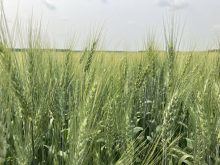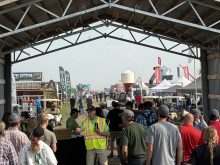Provincial agriculture ministry estimates are lower than Statistics Canada’s numbers, and analysts weigh in on who’s right
WINNIPEG — The size of the 2024 canola crop has become a controversial topic in Western Canada.
Most market analysts believe it’s much smaller than the 38 bushel per acre average and 19 million tonne estimate, which Statistics Canada published in September.
In late October, Saskatchewan Agriculture pegged the provincial canola yield at 33 bu. per acre, using data from its crop reporters across the province.
Read Also

New coal mine proposal met with old concerns
A smaller version of the previously rejected Grassy Mountain coal mine project in Crowsnest Pass is back on the table, and the Livingstone Landowners Group continues to voice concerns about the environmental risks.
Some analysts are now questioning Saskatchewan Agriculture and its crop production numbers, claiming the department has a poor track record for estimating yields.
Larry Weber, president of Weber Commodities, has compared the Saskatchewan Agriculture yield estimates to the StatCan final numbers, which are normally published in December.
Over the last three years, 2021-23, the Saskatchewan Agriculture estimates for provincial canola yields were consistently lower than the final StatCan figures:
In 2023, Saskatchewan Agriculture estimated 33.2 per acre for canola; the final was 37.
In 2022, Saskatchewan Agriculture reported 34; the final was 38.4.
In 2021, Saskatchewan Agriculture estimated 20; the StatCan final figure was 25.8.
Over the last three years, on average, Saskatchewan Agriculture has been wrong by 16.28 percent, Weber said.
“A three-year average miss of 16 per cent in canola is not acceptable,” Weber said in an email.
“Perhaps this year’s Sask Ag estimate needs to come with this disclaimer: past performance is no guarantee of future results.”
Nonetheless, Weber and most analysts agree that the 18.98 million tonne estimate from StatCan is wrong. They feel the final number for the 2024 growing season will come in much lower.
The question is, how much lower?
“Directionally, they (the provincial estimates) are certainly accurate,” said Bruce Burnett, director of weather and crops information for Glacier MarketsFarm.
“Whether we come in with those (final) numbers or not (for yield), that’s another thing…. I think, directionally, this is right. We’re going to see a smaller crop than currently is being forecast.”
A wet spring on the Prairies followed by scorching hot weather and little rain in the middle of summer is the main reason for weaker canola yields this year.
Diseases such as verticillium, sclerotinia and blackleg also reduced yields on hundreds of farms.
Like Saskatchewan, Alberta Agriculture has reported that canola yields are down in the province. It has projected the provincial average at 33 bu. per acre.
A representative from Saskatchewan Agriculture said most farmers and people in the crop industry believe that canola production is lower than anticipated.
“These estimates have been reached in various different ways, but the message appears to be the same for the 2024 canola crop,” said Meghan Rosso, a crops extension specialist with the provincial ministry.
Saskatchewan Agriculture has a large team of crop reporters, including farmers and industry reps, who provide information on what’s happening in their part of the province, Rosso said in an email.
“The information published in the crop report takes a ‘boots on the ground’ approach instead of a model-based approach; as such, we rely on information reported to us from volunteer crop reporters,” she said.
“The final crop report published Oct. 30 allowed producers to report on the yields they experienced throughout harvest.”
Saskatchewan Agriculture can certainly do more and is continually working to address “gaps” in coverage, Rosso noted.
However, improving the system will require more volunteers.
“We encourage any producers, or industry representatives, interested in reporting on their current local on-farm conditions throughout the growing season to reach out to our Agriculture Knowledge Centre at 1-866-457-2377.”


















